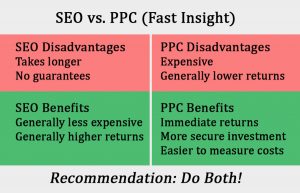What to expect when you’re investing: 3 tips for recent graduates
Just as babies and children go through various ages and stages as they grow, so does your nest egg. Here’s what you can expect from your bouncing bundle of assets, starting from the very beginning.
Investing has a lot in common with parenting. No one really knows what they’re getting into beforehand—and it’s the day-to-day decisions that make all the difference in the end. (There’s a lot less call for wet wipes in investing, however).
While parenting comes with an array of guidebooks that walk you through the typical stages of childhood, newbie investors are often left to rely on generic advice, rather than something geared toward the specific stage they are in. Since your investing expectations need to fit your current circumstances, it’s important to understand what to expect at each investing stage.
For brand-new investors who have just graduated, here’s what you need to know to give your nest egg the best chance to grow.
Start with an Emergency Fund
You need to lay the foundation for financial growth—in the same way that you read and sing to your newborn as a foundation for learning to read, rather than breaking out the grammar flash cards while still in the hospital.
We tend to think of investing only in terms of stocks and bonds, but savings is an important part of your investment strategy. Not only does a healthy savings account allow you to handle unexpected expenses in stride, but it also familiarizes you with the habit of setting money aside. This means your first step as the proud parent of a soon-to-be-robust nest egg is to build an emergency fund.
The rule of thumb for an emergency fund is enough to cover at least three months of living expenses. But a good initial goal for your emergency fund is $1,000, which is an achievable dollar amount that will still be helpful in a financial emergency. It’s a good idea to get started with a regular automatic transfer that coincides with your paycheck. Even if all you can afford is $20 per transfer, this will add up over time. You can also use your tax refund, graduation cash, or other windfalls to hit the $1,000 mark more quickly.
Also, don’t stop the automatic transfers once you’ve reached the $1,000 mark. Making regular deposits in your emergency fund will ensure that it’s always there when you need it, even if you face back-to-back financial emergencies. And methodical deposits will also help you build toward that ultimate goal of having enough to cover several months of expenses.
It’s Never Too Early to Think About Retirement
Just as the parents of a newborn cannot imagine their little potato as a surly teenager, no recent graduate can imagine being retired one day. It’s just too far off from your current experience to seem in any way real.
But recent graduates need to prioritize retirement investing since they have the luxury of time (and compound interest) to allow their contributions to grow. If you work somewhere with a 401(k) or other tax-deferred retirement program, set up an automatic contribution with every paycheck. You’re unlikely to miss the money coming out of your paycheck, and your future self will be so glad you did it.
But what if your career hasn’t exactly launched yet? Some 52% of college graduates are underemployed one year after graduation, which means they are unlikely to have access to an employer-sponsored retirement account.
Opening a traditional IRA or Roth IRA should be part of your post-graduation checklist. Either one can be found through an online broker or robo-adviser.
Contributions to a traditional IRA are tax-deductible, reducing your taxable income. Roth IRAs, on the other hand, are funded with already-taxed dollars. Though it may hurt to give up the tax deduction, recent grads are probably in the lowest tax bracket of their adult life right now, so any contributions to a Roth IRA will save a great deal in taxes in the future, since withdrawals are tax-free in retirement.
How to Invest for Retirement
There’s no lack of messages telling recent grads that they need to set money aside for retirement. Just like the suggestions that new parents get their baby on a sleep schedule, this kind of advice generally avoids answering the “Yeah, but HOW?!” follow-up question.

While there is no one specific way to invest for retirement (or get a baby to sleep through the night), understanding the guidelines for starting off in the right direction can help you overcome any investing intimidation you feel. There are two main guidelines to keep in mind for your retirement investments:
Fees
Whether you are contributing to a workplace retirement account or have opened your own brokerage account, make sure you know how much you are being charged in fees. There are two ways you may be charged: as fees charged by the plan administrator or as fees charged by the funds you invest in within the retirement account.
Plan administrator fees are commonly between 0.5% and 2%, but the more you can lower this cost, the more your money can grow. Assuming a 7% annual return, a $25,000 investment will grow to $227,000 over 35 years if the plan administrator fee is 0.5%. But if you increase the fee to 1.5%, that $25,000 investment will only grow to $163,000 over 35 years of 7% annual growth. To find the plan administrator fees, check your plan’s statement or prospectus. The information will be listed as Total Asset Based Fees, Total Operating Expenses as a Percentage, or as Expense Ratios.
Fees charged by the funds within your retirement account can be somewhat easier to reduce or avoid than plan administrator fees. That’s because each fund you invest in will list its expense ratio—the total fees paid expressed as an annual percentage—so you can compare apples to apples when looking at similar funds. You can check the fund prospectus to find out the expense ratio to help guide your fund purchase decisions.
Asset Allocation
The other important guideline for jumping into retirement investing as a newbie is figuring out just how your money will be invested. This is known as asset allocation, and it can feel overwhelmingly complicated.
While it is possible to go down an asset allocation rabbit hole in attempting to create the ideal portfolio for your needs, the main thing new investors need to know about their asset allocation is that the money has a chance to grow. It does not have to be ideal (if that even exists) as long as it’s headed basically where you want to go. In other words, will the investment grow over time, and does it have a reasonably low fee structure?
For many recent grads, this may mean picking a target-date fund. This is a kind of mutual fund that automatically rebalances your assets over time to reduce your risk level as you get closer to retirement. A 22-year-old in 2024 might choose a fund target dated for retirement in 2067. This gives the grad a place to invest their retirement contributions, without requiring a dizzying number of decisions.
Index funds can be another option for recent grads who feel a little more confident about making investment decisions. These funds are set up to mirror a specific index, like the S&P 500, and give investors broad exposure to the market. But however you choose to allocate your assets, remember to keep an eye on the expense ratio.
Giving Your Nest Egg the Best Possible Start
Babies and nest eggs don’t need everything to be perfect to thrive. Keeping them safe (from fees), fed (with regular contributions), and loved (with intentional choices) will give them a great start for a bright future.
ABOUT THE AUTHOR
Fast Company
(8)
Report Post







